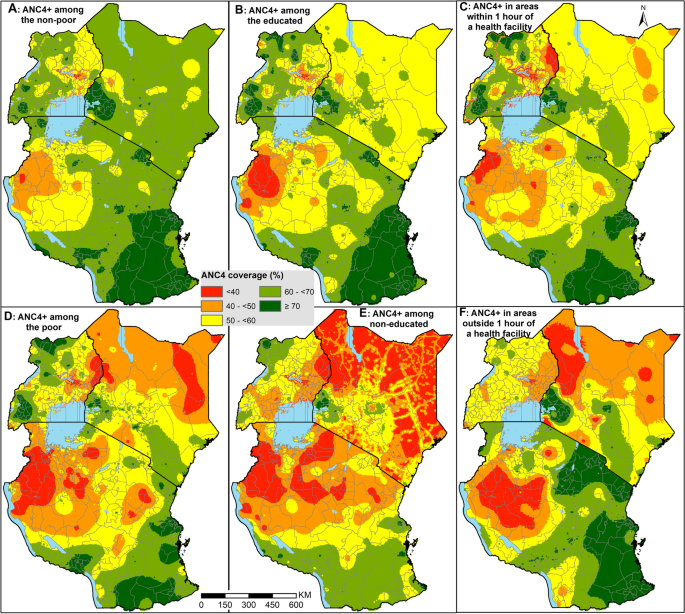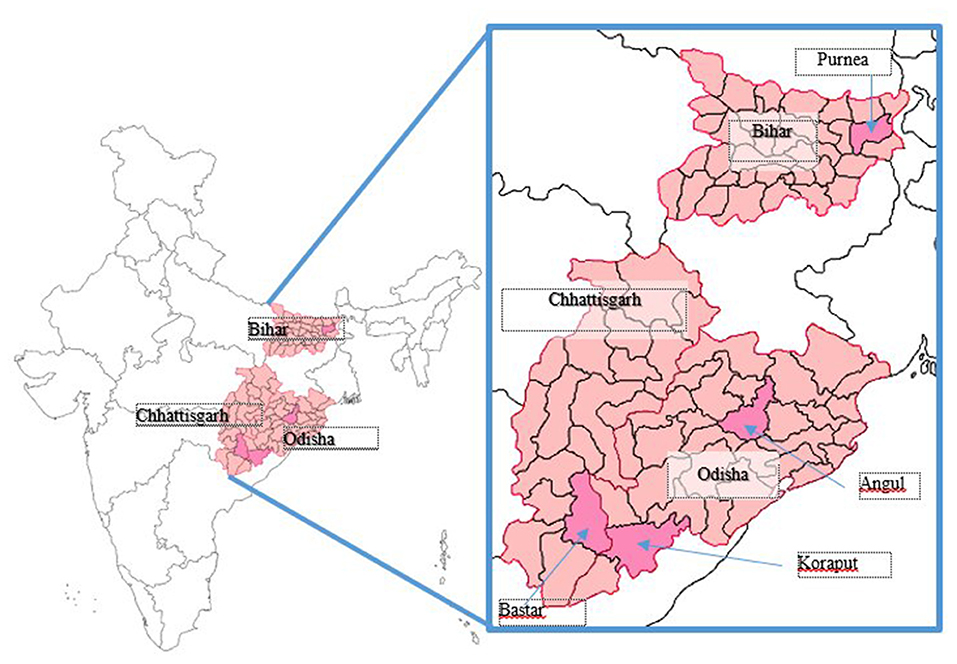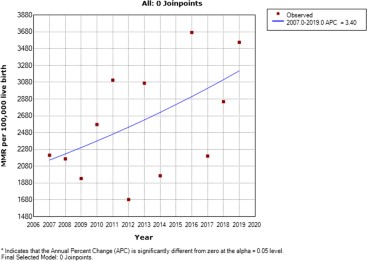By A Mystery Man Writer

Background Pregnant women in sub-Saharan Africa (SSA) experience the highest levels of maternal mortality and stillbirths due to predominantly avoidable causes. Antenatal care (ANC) can prevent, detect, alleviate, or manage these causes. While eight ANC contacts are now recommended, coverage of the previous minimum of four visits (ANC4+) remains low and inequitable in SSA. Methods We modelled ANC4+ coverage and likelihood of attaining district-level target coverage of 70% across three equity stratifiers (household wealth, maternal education, and travel time to the nearest health facility) based on data from malaria indicator surveys in Kenya (2020), Uganda (2018/19) and Tanzania (2017). Geostatistical models were fitted to predict ANC4+ coverage and compute exceedance probability for target coverage. The number of pregnant women without ANC4+ were computed. Prediction was at 3 km spatial resolution and aggregated at national and district -level for sub-national planning. Results About six in ten women reported ANC4+ visits, meaning that approximately 3 million women in the three countries had <ANC4+ visits. The majority of the 366 districts in the three countries had ANC4+ coverage of 50–70%. In Kenya, 13% of districts had < 70% coverage, compared to 10% and 27% of the districts in Uganda and mainland Tanzania, respectively. Only one district in Kenya and ten districts in mainland Tanzania were likely met the target coverage. Six percent, 38%, and 50% of the districts had at most 5000 women with <ANC4+ visits in Kenya, Uganda, and mainland Tanzania, respectively, while districts with > 20,000 women having <ANC4+ visits were 38%, 1% and 1%, respectively. In many districts, ANC4+ coverage and likelihood of attaining the target coverage was lower among the poor, uneducated and those geographically marginalized from healthcare. Conclusions These findings will be invaluable to policymakers for annual appropriations of resources as part of efforts to reduce maternal deaths and stillbirths.

Frontiers Has the Gratuité policy reduced inequities in

Full article: Heterogeneities in utilization of antenatal care in

GloPID-R Funders Living Roadmap - supporting stronger coordination of clinical trial responses to epidemics and pandemics — Centre for Tropical Medicine and Global Health

Frontiers Antenatal Care Service Utilization Among Adolescent

Determinants of access to antenatal care and birth outcomes in
Plasmodium falciparum parasite prevalence in East Africa: Updating data for malaria stratification

Evidence of health inequity in child survival: spatial and
Analysis of socioeconomic differences in the quality of antenatal

PDF) Geographical access to care at birth in Ghana: a barrier to safe motherhood

Trends and causes of maternal death at the Lagos University teaching hospital, Lagos, Nigeria (2007–2019)